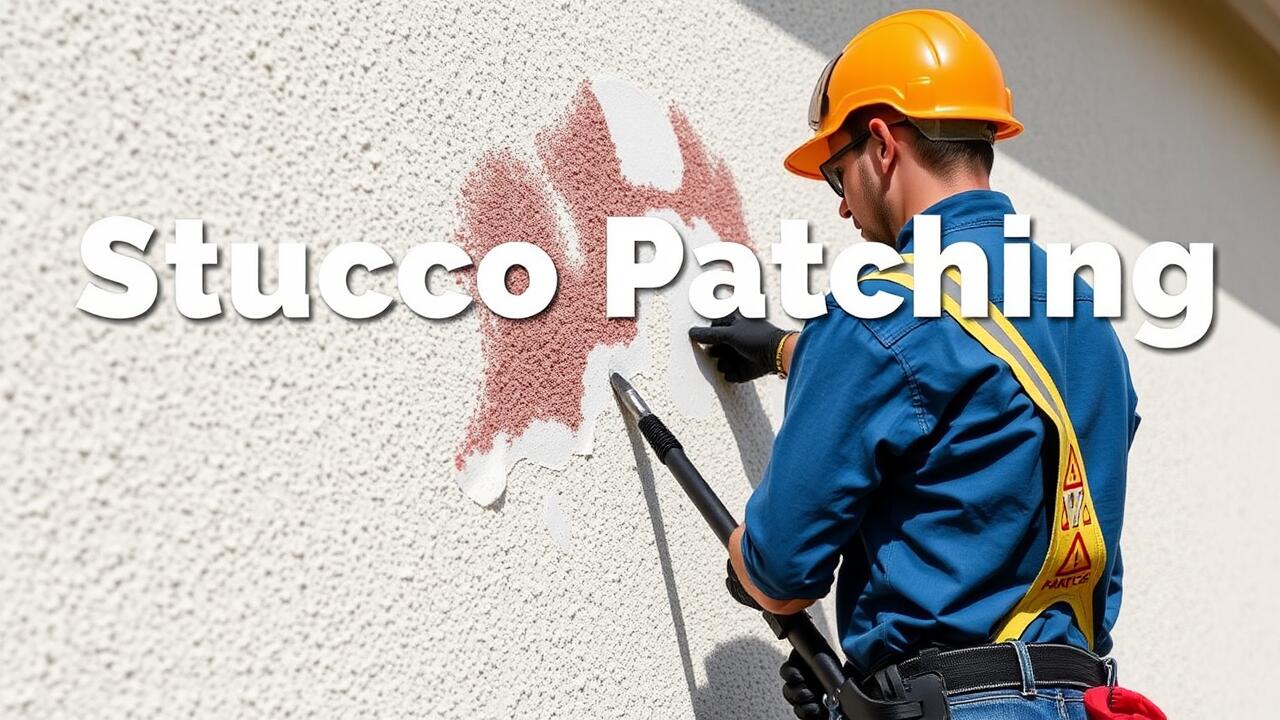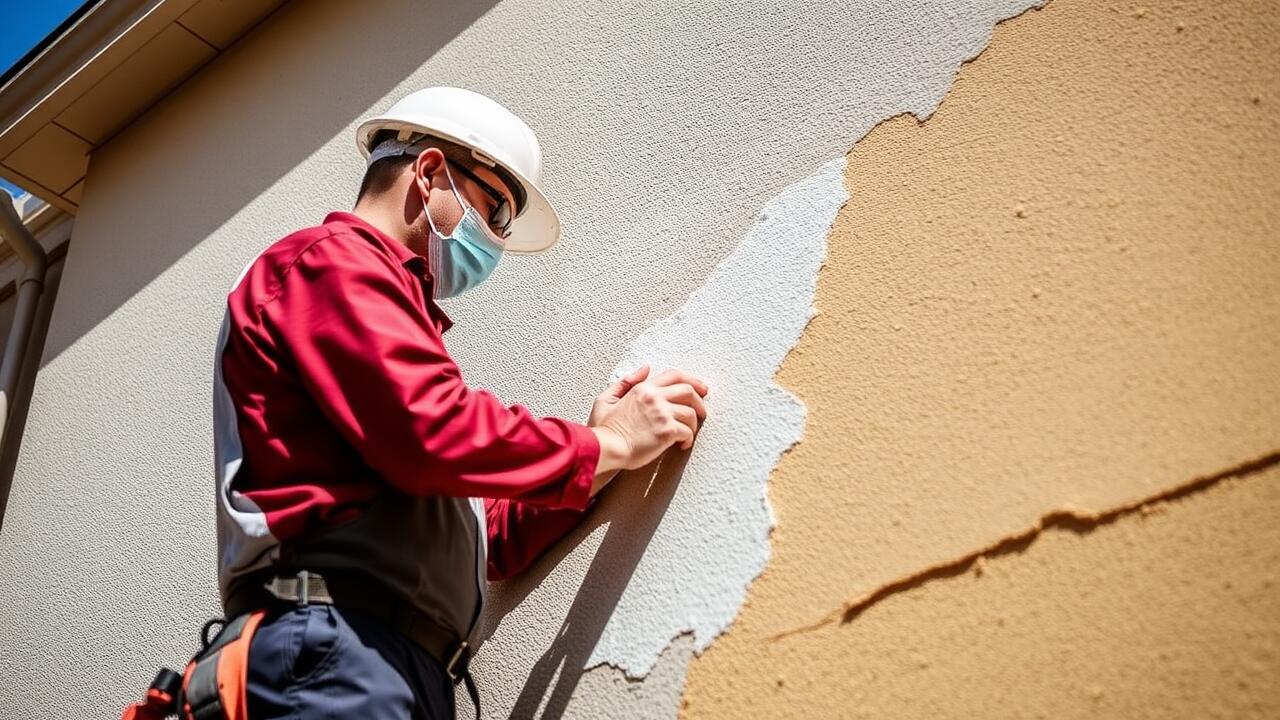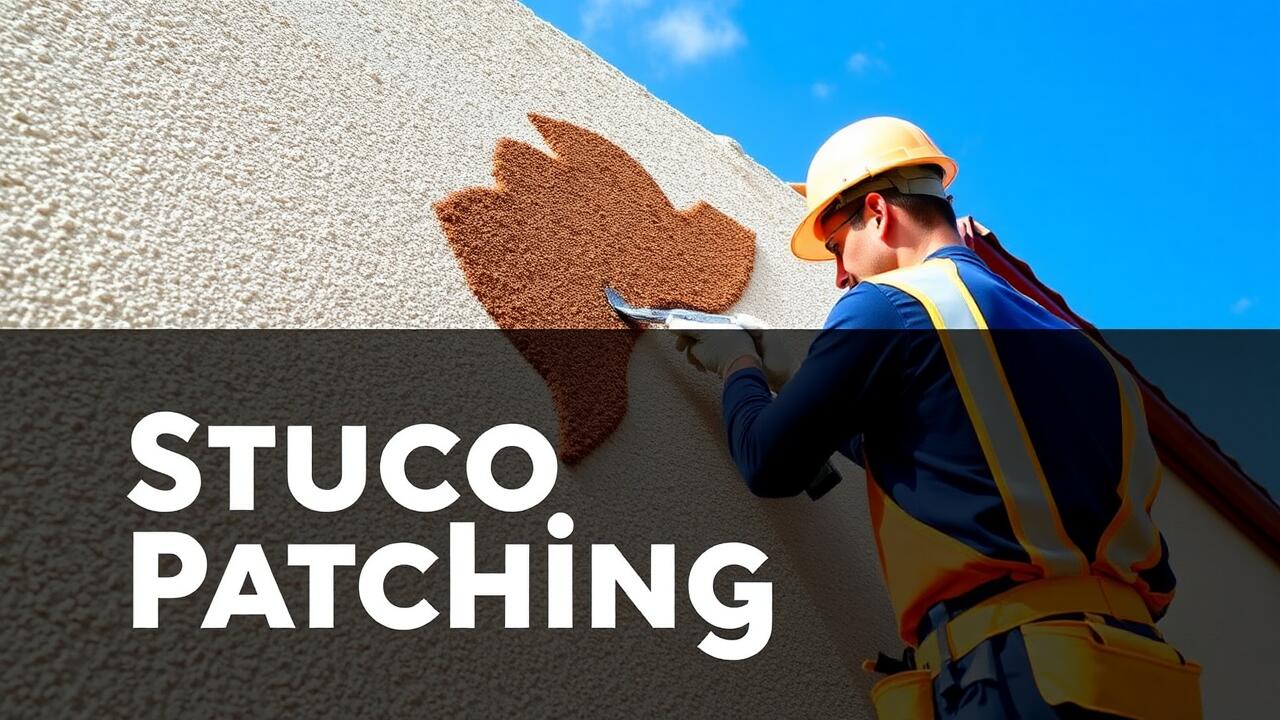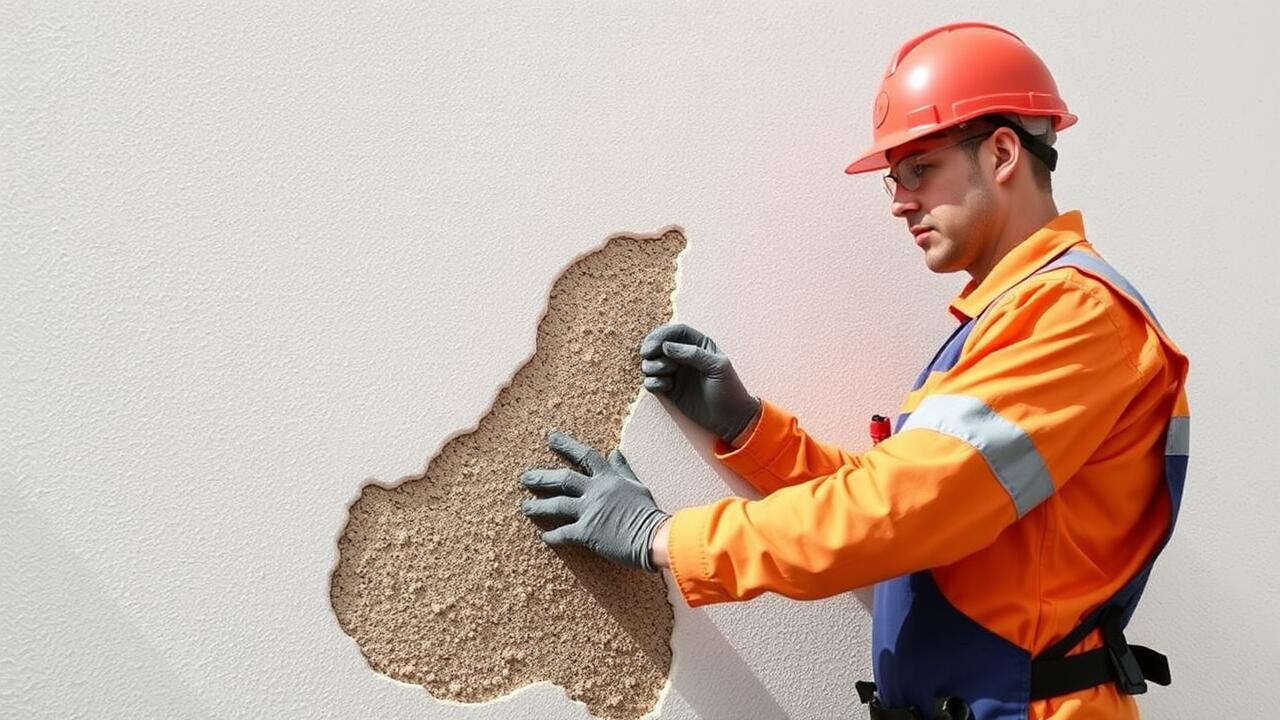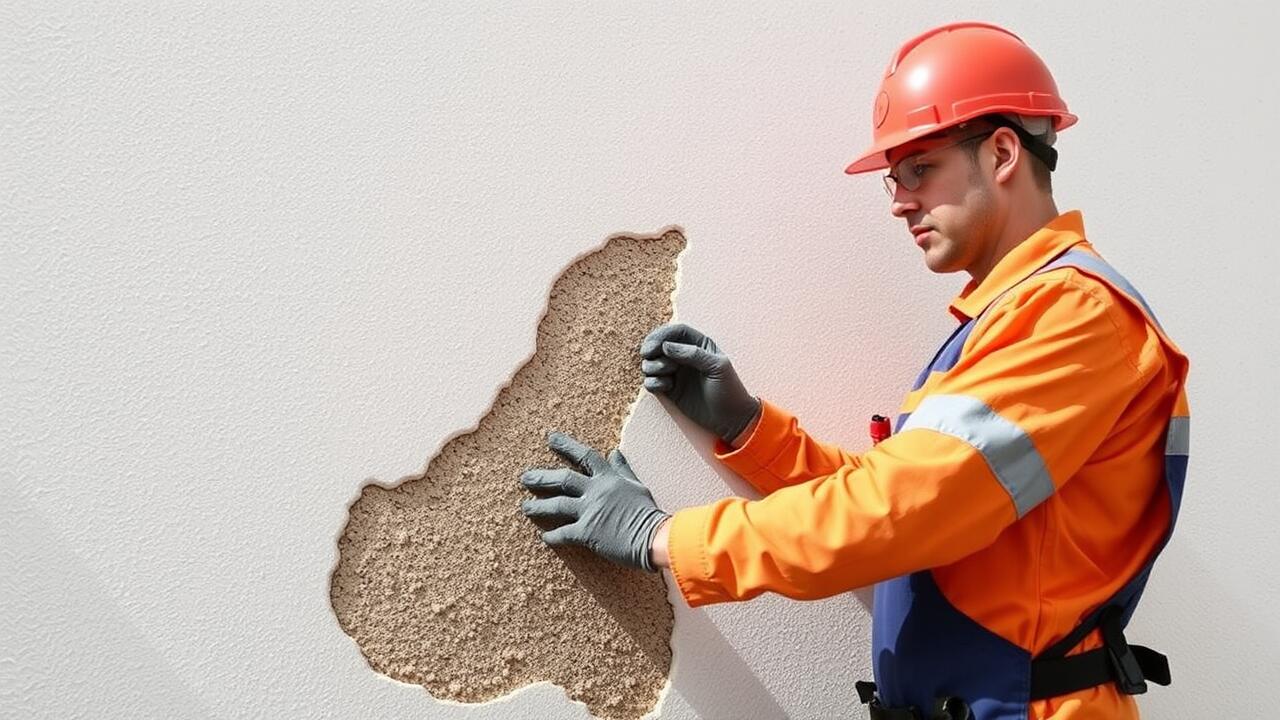
Techniques for Surface Scarification
Surface scarification is a critical step in preparing a substrate for stucco patching. This technique involves roughening the existing surface to enhance adhesion between the old and new materials. Various tools can be utilized for this purpose, including wire brushes, grinders, or scarifying machines. Each method offers unique benefits depending on the condition of the surface and the level of preparation required. Proper scarification helps in creating a textured foundation that allows stucco to bond more effectively, reducing the likelihood of future delamination.
In areas like Stucco Patching Venice, Los Angeles, understanding the local climate and environmental factors is essential for effective surface scarification. The technique must be adapted based on the substrate, which may include materials such as concrete, plaster, or previously applied stucco. Attention should be given to any existing moisture on the surface, which could affect the scarification process. A clean and well-prepared surface not only aids in adhesion but also influences the longevity and durability of the repair.
Methods to Create a Strong Bond
Creating a strong bond between stucco and the substrate is essential for the longevity and integrity of any patching work. The first step often involves cleaning the surface thoroughly to remove dirt, dust, or any loose material that may hinder adhesion. Tools like wire brushes, pressure washers, or sandblasting can effectively prepare the area. Once cleaned, applying a bonding agent helps enhance the connection between the patch and the existing stucco. This chemical intermediary fosters a more robust adherence, reducing the risk of future detachment.
Proper mixing of the stucco material itself also plays a vital role in achieving a solid bond. The ratios of water, cement, and aggregate must be precisely followed to ensure the mixture has the right properties. When undertaking projects like stucco patching in Reseda, Los Angeles, environmental factors such as temperature and humidity should be considered. These can affect curing times and the final strength of the bond. Inadequate mixing or poor environmental conditions can lead to uneven patches that may peel or crack over time.
Moisture Management in Surface Preparation
Effective moisture management is crucial for successful surface preparation prior to stucco patching. Excess moisture can compromise bond strength and lead to further degradation of the patched area. Techniques such as monitoring weather conditions and using moisture meters help ensure that surfaces are properly dried before applying new materials. This attention to moisture levels is particularly important in regions like Mar Vista, Los Angeles, where variations in humidity can impact the drying process.
In addition to monitoring moisture, implementing appropriate drying techniques can further enhance surface preparation. Utilizing fans or heaters can help expedite the drying process, ensuring a solid foundation for the stucco patch. It is essential to assess the condition of the existing substrate and to allow for adequate drying time before applying any patching compound. By prioritizing these moisture management strategies, the longevity and effectiveness of stucco patching projects in Mar Vista can be significantly improved.
Ensuring Adequate Drying Conditions
Proper drying conditions are essential for the success of stucco patching. High humidity levels or excessive moisture can hinder the curing process, leading to poor adhesion and compromising the integrity of the patch. Ideal drying conditions typically involve maintaining an environment where temperature and humidity are balanced. Utilizing fans or heaters can aid in achieving appropriate air circulation, reducing the risk of moisture-related issues during application.
In areas like Westlake, Los Angeles, where weather variations can be significant, monitoring these conditions becomes crucial. The local climate may necessitate additional precautions, such as scheduling patching work during dryer periods or covering the area to protect it from unexpected rain. Ensuring that the surface is adequately dried before applying new stucco enhances the bond with the existing material, leading to a more durable and long-lasting patch.
Understanding Different Substrates
Understanding the type of substrate is essential in ensuring the success of stucco repairs. Various materials such as concrete, brick, and wood require different preparation techniques. Each substrate has its unique characteristics that impact how the stucco adheres and performs over time. For instance, concrete surfaces may need scarification to enhance bonding, while wood substrates often require additional moisture control to prevent swelling or decay.
In areas like Los Feliz, Los Angeles, where stucco is a common building material, adapting the repair approach to match the specific substrate can greatly influence the longevity of the patch. Furthermore, the condition of the substrate plays a crucial role in determining the appropriate patching materials and techniques. A thorough evaluation of the existing surface will guide contractors in selecting the right methods, ultimately leading to a more durable and aesthetically pleasing result in stucco patching projects.
Adapting Techniques for Various Materials
When working with different substrates, it is essential to adapt the surface preparation techniques to ensure optimal adhesion and durability of the patch. For instance, masonry surfaces may require a more aggressive scarification process to remove any loose particles and create a rough texture. In contrast, wooden substrates might benefit from a gentler approach involving light sanding and the application of a bonding agent to prevent moisture entrapment, which can compromise the integrity of the patch. Each substrate's unique characteristics dictate modifications in preparation methods.
In areas like Stucco Patching Koreatown, Los Angeles, the variety of existing building materials can present specific challenges. For instance, stucco applied over existing plaster may need careful evaluation to determine if the surface is sound enough for a direct patch. Incorporating suitable bonding agents, along with effective moisture management practices, becomes crucial in these situations, ensuring that every type of substrate is properly addressed. Understanding these dynamics fosters better outcomes for stucco patches and enhances the overall structural robustness.
FAQS
What is surface scarification, and why is it important for stucco patching?
Surface scarification involves roughening the existing surface to create a mechanical bond, which is crucial for ensuring that the new stucco adheres properly to the substrate.
How can I ensure a strong bond when patching stucco?
To create a strong bond, use techniques such as applying a bonding agent, thoroughly cleaning the surface, and ensuring that the old stucco is adequately scarified before applying the new layer.
What role does moisture management play in surface preparation for stucco?
Moisture management is essential because excess moisture can prevent the new stucco from adhering properly and may lead to future issues like mold or mildew. Ensuring the surface is dry and free from moisture before patching is crucial.
How can I ensure adequate drying conditions for stucco patching?
To ensure adequate drying conditions, work in dry weather, avoid applying stucco in high humidity, and consider using fans or heaters to help speed up the drying process if necessary.
Do different substrates require different surface preparation techniques for stucco patching?
Yes, different substrates such as concrete, masonry, or wood may require specific preparation techniques. It's important to adapt your surface preparation approach to the material to ensure optimal adhesion and durability of the patch.
